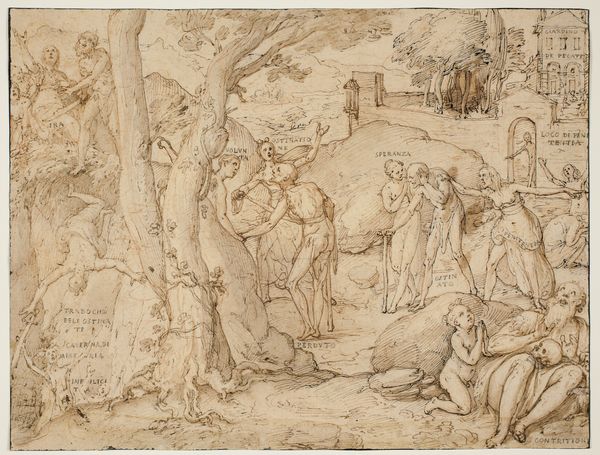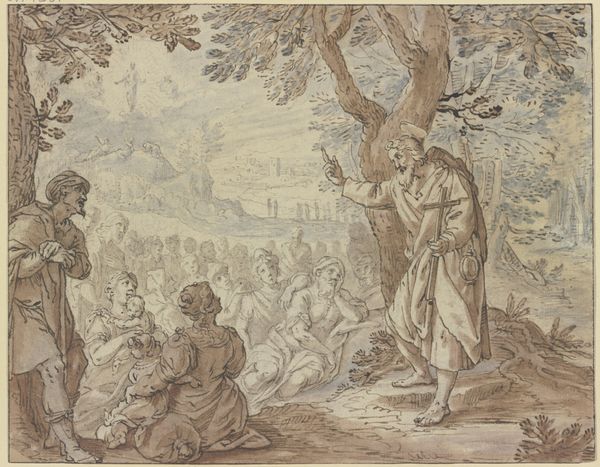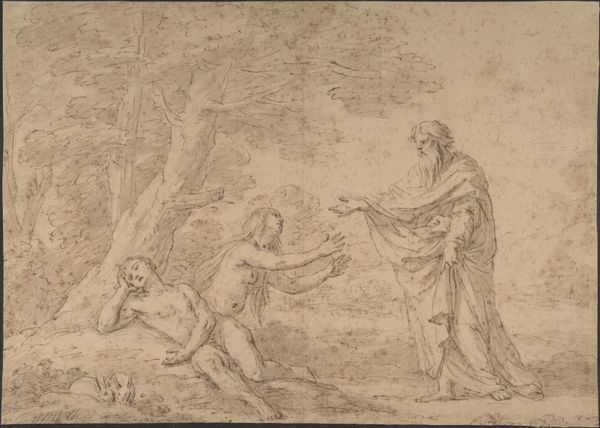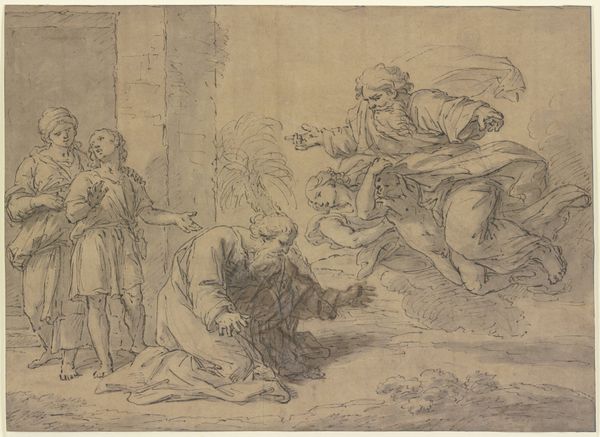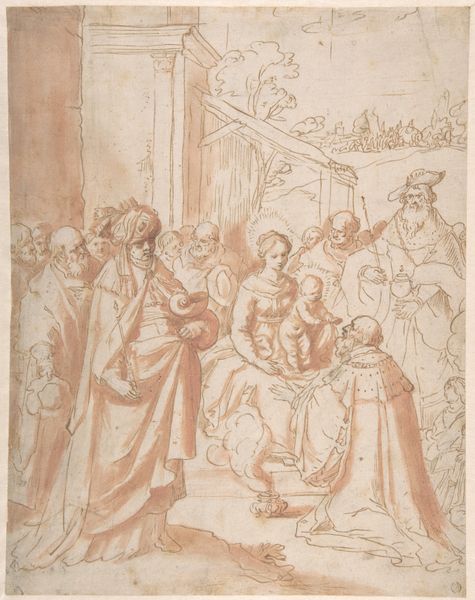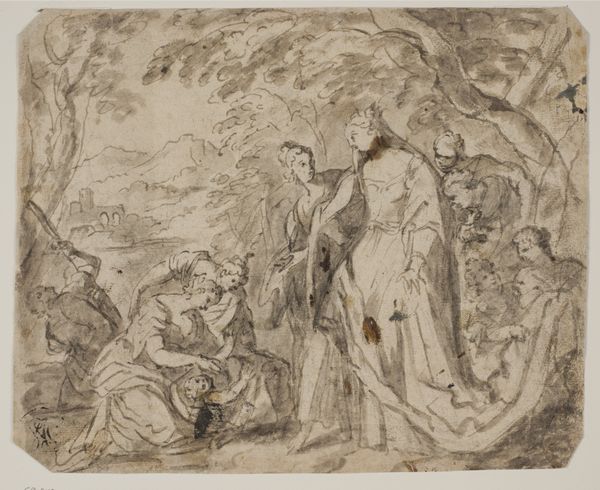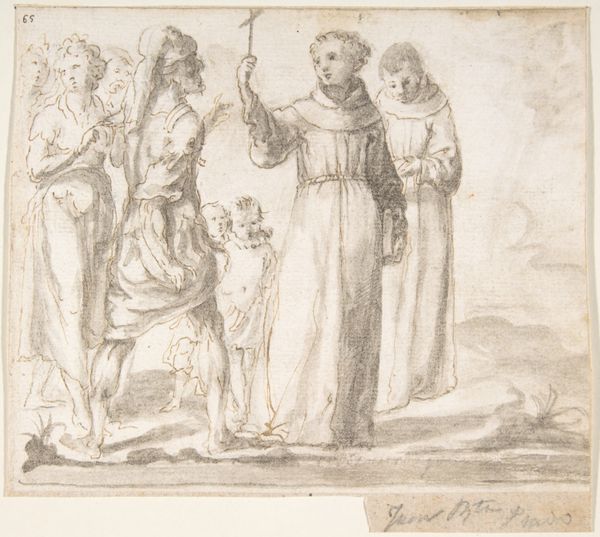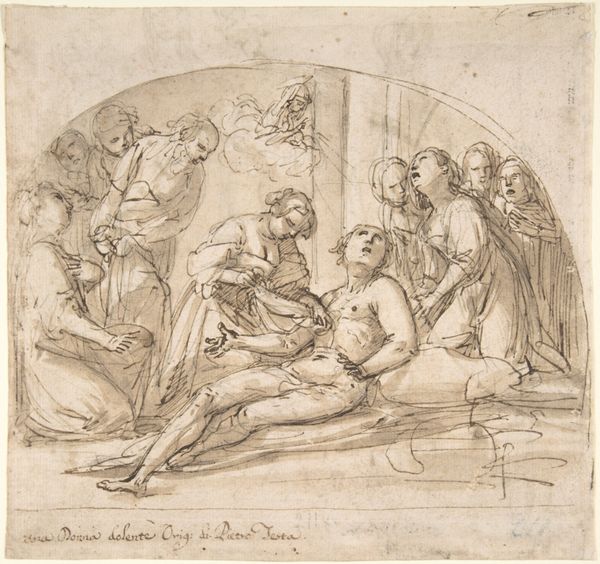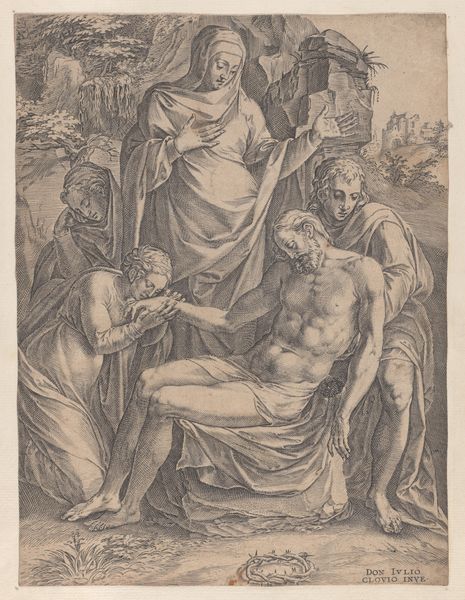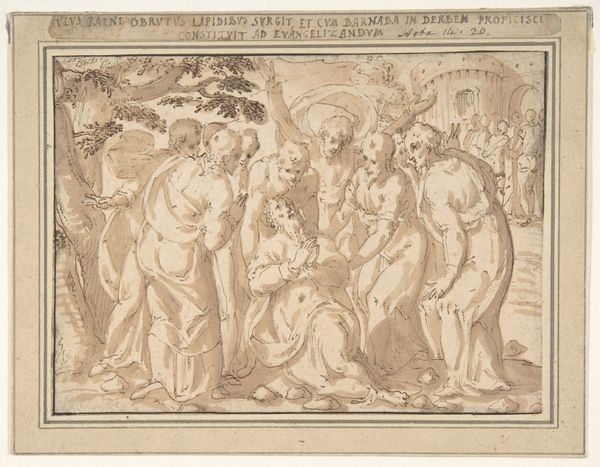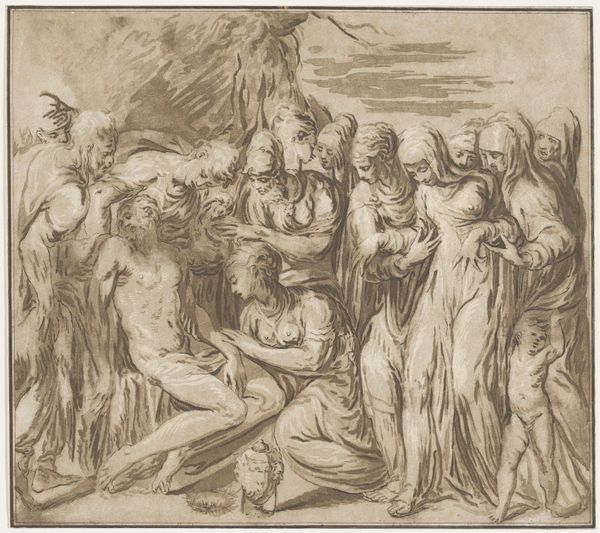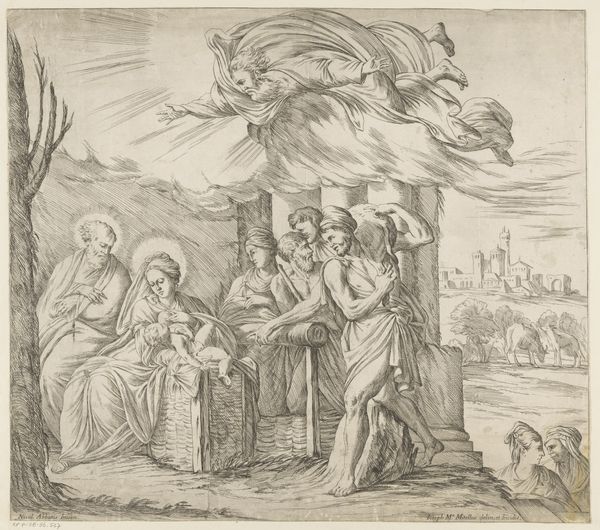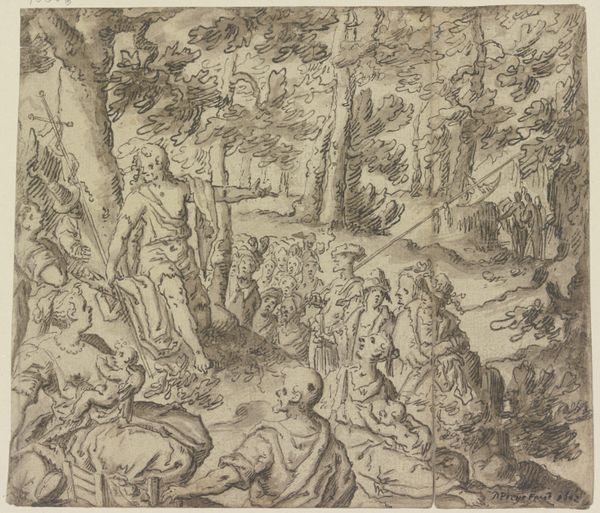
drawing, paper, ink
#
drawing
#
ink painting
#
figuration
#
paper
#
11_renaissance
#
ink
#
history-painting
#
northern-renaissance
#
watercolor
Dimensions: overall: 14.7 x 17.6 cm (5 13/16 x 6 15/16 in.)
Copyright: National Gallery of Art: CC0 1.0
Editor: This is "Mary and John before the Man of Sorrows," a drawing in ink on paper with watercolor, dating back to around 1514 by Hans Süss von Kulmbach. It's… quite a somber image. I’m struck by the raw emotion conveyed, but also how meticulously detailed the figures are despite that. What do you see in this piece from your perspective? Curator: Well, considering its historical moment, it reflects the increased emphasis on personal piety and emotional connection to religious narratives in the late medieval and early Renaissance periods. Drawings like this served not only as preparatory studies for larger works but also as independent objects of devotion. Editor: Devotion, yes, that makes sense given the subject matter. But how did these drawings function within the social context of the time? Were they widely accessible? Curator: Accessibility is a key point. While illuminated manuscripts were luxury items, prints and drawings – though still not mass-produced in the modern sense – offered wider circulation. The style, recalling earlier prints and woodcuts, might connect to the burgeoning print culture. These images played a significant role in shaping religious understanding, acting as visual aids for contemplation in private homes and monastic settings. The small size, too, implies a personal object meant for intimate interaction. The artist aimed to stir deep sympathy with Christ’s suffering. Editor: So, art shaping public sentiment, even then! It is fascinating how this image, even with its simple medium, could be a powerful political and cultural tool. Curator: Precisely! It is not just about religious doctrine; it is about negotiating faith and lived experience in a changing world. Editor: I never thought about it that way. Looking at it now, I see how the artist really leveraged accessible imagery for a greater social and cultural purpose. Thanks for helping me understand the context!
Comments
No comments
Be the first to comment and join the conversation on the ultimate creative platform.

